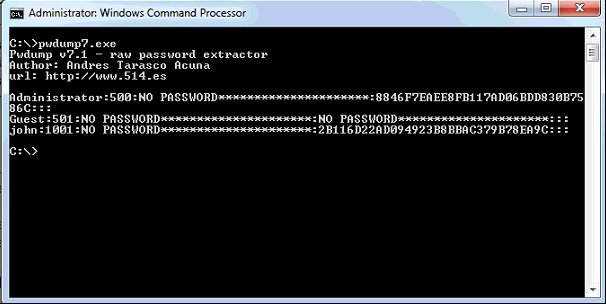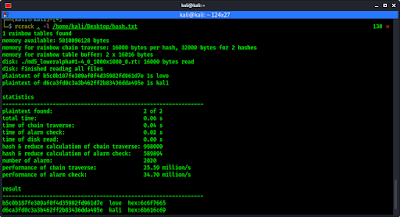


- #How to use rainbowcrack windows archive#
- #How to use rainbowcrack windows code#
- #How to use rainbowcrack windows password#
- #How to use rainbowcrack windows plus#
- #How to use rainbowcrack windows crack#
For threat actors, they’ve made it easier to crack passwords for malicious gain, testing what they can access with the passwords since most people (at least to some degree) reuse passwords across accounts.
#How to use rainbowcrack windows password#
For ethical security researchers, they’ve provided a means to check the effectiveness of password security standards. Rainbow tables have typically been of interest to those on both sides of the law. This is why it is called a trade-off.” Over the years, rainbow tables have proved most effective against the popular but particularly weak password hashing algorithm LAN Manager hash, used in the earlier days of Windows. The larger you make the table, by keeping a larger fraction of passwords, the faster the cracking is. The tables only contain a fraction of the passwords (i.e., one in 100,000) and they allow you to crack all passwords with only a fraction of the effort. You organize the passwords in chains, and only store the first and last element of each chain. Rainbow table creator Oechslin tells CSO: “Rainbow tables allow you to reduce the effort of cracking a password by using large amounts of memory. Vast numbers of hashed passwords can be run through this data set and, following several stages of reduction by which hashes are split into smaller components, computed and linked to words and letters to reveal whole passwords in plaintext. Rainbow tables greatly reduce the complexity in cracking large numbers of passwords through a pre-generated data set of password hashes. This can technically be achieved via brute-force attacks, but as the set of possible password outcomes grows, it becomes more and more infeasible to use this method. Hashing algorithms disguise passwords and make them unviewable to anyone without inverting the hash function. How do rainbow tables work?įor security reasons organizations have, for several years, typically stored users’ passwords using hashes. These create a colorful rainbow with a corresponding number of iterations. “Rainbow” refers to the colors used within a table to represent different reduction functions and steps. The method itself is based on research from the early 1980s by Martin Hellman and Ronald Rivest that explored the performance trade-offs between processing time and the memory needed for cryptanalysis.

Rainbow tables were invented by IT expert Philippe Oechslin, who published a paper on his work in 2003. Run the following command on each of the files in the directory ending in *.rt.A rainbow table is a large, precomputed table designed to cache the output of cryptographic hash functions to decrypt hashed passwords into plaintext. The table files will be in the current directory.
#How to use rainbowcrack windows code#
#How to use rainbowcrack windows archive#
#How to use rainbowcrack windows plus#
Rainbow cracking can greatly reduce the amount of time it takes to crack a password hash, plus you can keep the tables, so you only have to generate them once! Requirements This method works especially well for people with slow processors, since you don't have to compute much. This means that hashes are pre-generated by a computer and stored in a large rainbow table file with all of the hashes and words that correspond to them. Rainbow tables work on the principle of a time-memory trade-off. If there is, the password is correct if not, it will keep guessing. Normally, when you crack a password hash, your computer computes a word, generates the hash, then compares to see if there is a match. This means we have to crack those hashes! Hashes are made to be one-way, which means algorithmic reversal is impossible. However, after a password is made, the computer stores a one-way hash of the password that obfuscates it. When a password is created, the user types the password in what is called "plain text", since it is in a plain, unhashed form. Passwords are normally stored in one-way hashes.


 0 kommentar(er)
0 kommentar(er)
